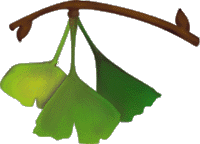
The Cretaceous Period
The forest rang with the sounds of life.
A flock of pteranodon chattered to each other as they roosted in the tall
trees. Far below, where the
afternoon sunlight made dappled patterns on the dark forest floor, tiny
prehistoric lizards scurried in search of food.
Larger predators roared and crashed through the underbrush in pursuit of
their prey.
What the Weather Was
What Was Growing
How Do We Know That?
Mesozoic Timeline
The last period of the Age of Dinosaurs, the
Cretaceous period, occurred at the very end of the Mesozoic Era. It lasted from 144 million years ago until 65 million years
ago. In terms of climate, the
Cretaceous was the prehistoric period that most resembled modern earth.
How the Earth Moved
Sea levels rose during the Cretaceous period.
Panthalassa was still the Earth’s major ocean, but it was beginning to
take on the shape of the modern-day Pacific Ocean.
The newly developed Atlantic Ocean grew wider, while the Tethys Sea
dwindled. The Tethys Sea eventually became today’s Mediterranean Sea.
Volcanic eruptions continued to shape the Earth
during the Cretaceous period. Major
rifts in the Earth’s plates formed new mountain ranges, such as the Andes
Mountains of South America.
What the Weather Was
Top
of Page
What
Was Growing
The Cretaceous period also saw new advances in
Earth’s vegetation. Flowering
plants, called angiosperms, first appeared during this period. Modern hardwood trees also began to cover the earth.
In many areas, these hardwoods began to outnumber the gingkos and cycads,
until the hardwoods and the conifers became the most abundant type of
vegetation.
Top
of Page
How
Do We Know That?
Top
of Page
